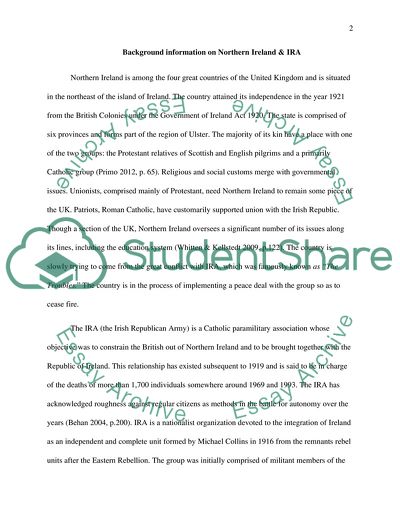Cite this document
(“Conflict between Irish Republican Army (IRA) and the Northern Ireland Essay”, n.d.)
Conflict between Irish Republican Army (IRA) and the Northern Ireland Essay. Retrieved from https://studentshare.org/social-science/1685364-conflict-between-irish-republican-army-ira-and-the-northern-ireland
Conflict between Irish Republican Army (IRA) and the Northern Ireland Essay. Retrieved from https://studentshare.org/social-science/1685364-conflict-between-irish-republican-army-ira-and-the-northern-ireland
(Conflict Between Irish Republican Army (IRA) and the Northern Ireland Essay)
Conflict Between Irish Republican Army (IRA) and the Northern Ireland Essay. https://studentshare.org/social-science/1685364-conflict-between-irish-republican-army-ira-and-the-northern-ireland.
Conflict Between Irish Republican Army (IRA) and the Northern Ireland Essay. https://studentshare.org/social-science/1685364-conflict-between-irish-republican-army-ira-and-the-northern-ireland.
“Conflict Between Irish Republican Army (IRA) and the Northern Ireland Essay”, n.d. https://studentshare.org/social-science/1685364-conflict-between-irish-republican-army-ira-and-the-northern-ireland.


